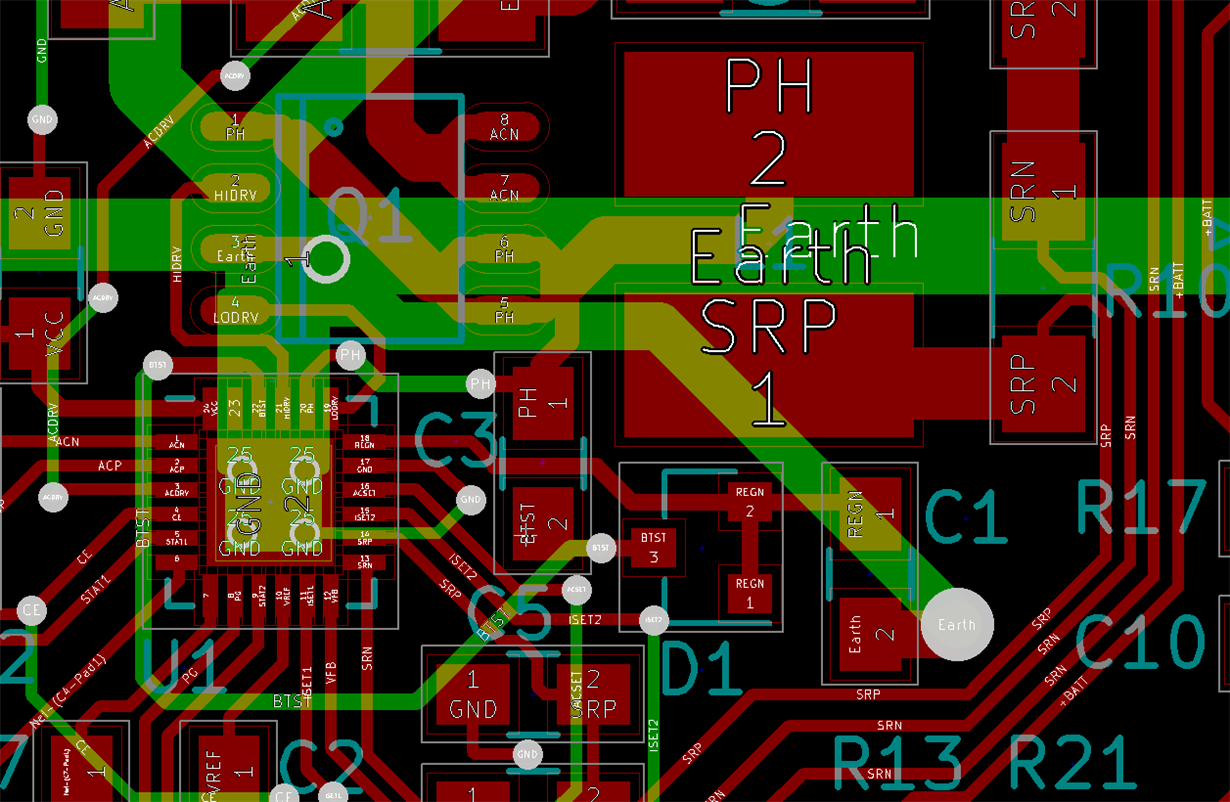Hi,
I am trying to build a 6 cell / 2A Li-Ion charger using BQ24618.
So far my prototype is charging the battery, but the n-FET (I'm using a Si7288DP dual n-FET) is getting very hot quickly (it reaches 60°C within a minute or so).
From the scope traces it seems to me that REGN is unstable and LODRV not switching properly:
Channels from top to bottom: REGN, HIDRV, LODRV, PH.
The schematic is closely based on the reference design given in the datasheet (attached below) and the PCB section of the buck converter looks like that:
I'd appreciate any advise on how to further debug & fix this issue.
Regards,
Jens




